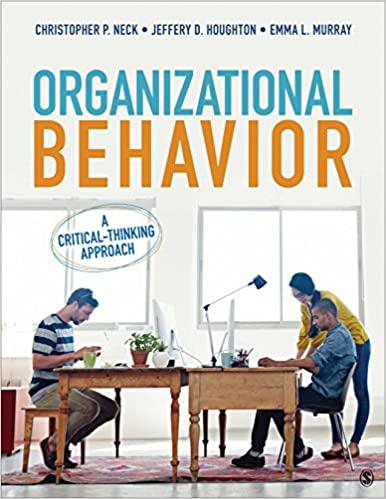When Angela Ahrendts took the helm as CEO of Burberry in July 2006, the ancient luxury goods
Question:
When Angela Ahrendts took the helm as CEO of Burberry in July 2006, the ancient luxury goods company was struggling. Despite a burgeoning global luxury market, the brand, founded in 1856 in Hampshire, England, was growing at a sluggish 2 percent a year. Competitor brands were far outpacing Burberry in profits: Louis Vuitton Moët Hennessy had nearly 12 times Burberry’s revenue, and Pinault-Printemps-Redoute (now Kering) was pulling in more than 16 times.
Eight years later, American-born Ahrendts has turned the company around; her revitalization of Burberry even earned her the title of honorary Dame of the British Empire, and during her reign made her the top-paid CEO (beating out male and female peers alike) in all of Britain. By identifying why sales were sluggish and then making sweeping changes to the company’s organization, Ahrendts dramatically increased the company’s returns.
Her clear vision and execution catapulted Burberry back into the circle of esteemed luxury brands.
How had an iconic brand like Burberry gotten itself into such a predicament? Although the problems were multifaceted, the short answer is inefficient organization. The challenges within the organizational structure resulted in a lack of a clear, long-term vision. Burberry and its employees had simply lost focus.
Ahrendts saw trouble at the very first planning meeting with Burberry’s top executives. Despite the typical British weather, none of the managers was wearing the company’s signature item: the Burberry trench coat. “If our top people aren’t buying our products, despite the great discount they could get, how could we expect customers to pay full price for them?,” she wondered.
Burberry had long been organized as though it was a department store. Each category of men’s and women’s categories had its own leader. That may seem to make sense, but there was little integration. This led to the heads of the various categories making decisions that were good for them but detrimental to the business as a whole.
The problem extended all the way down to salespeople, who were focused on moving easy-sell items like shirts instead of higher-priced items that affected the bottom line. They did not have the resources to enable them to convince customers that items like the classic trench were a great purchase.
At the time Ahrendts took over, Burberry had 23 licenses worldwide. Issuing so many licenses with little direction had resulted in too many offerings, from pet outfits to kilts. Sales of signature outerwear made up just 20 percent of Burberry’s business. The trademarked check pattern had been coopted by the knock-off industry and had morphed into a distinctly “unluxury” identity. The brand had become more and more ubiquitous, but that’s not necessarily a good thing in the luxury market. The company was trying for mass appeal. As Ahrendts put it, Burberry had “something for everybody, but not much of it exclusive or compelling.”
Ahrendts took charge to restructure Burberry around an improved brand image. She accomplished this in three main steps. First, she created a clear long-term vision. Next, she made sure it was understood by everyone.
Finally, she fully engaged people from top to bottom: top executives, salespeople, customers, and everyone in between.
Her vision began with remembering Burberry’s core: outerwear and its famous trench coats. Ahrendts realized that much of the disconnection between departments occurred because of organization, and that affected sales.
She appointed designer, Christopher Bailey, as Burberry’s “brand czar.” His eyes would see every piece of merchandise to be sold anywhere in the world. This gave the brand significantly more unity; Bailey polished Burberry into a “luxury brand with a very British sensibility.” Ahrendts found that appointing a brand czar had an effect on customers, saying, “The purer our message, the more compelling it is to consumers.” Along similar lines, heads of other practical areas were appointed, including corporate resources, planning, and supply chain.
The goal was to keep the best interests of the brand at the forefront of every employee’s mind.
Questions 1. Define organizational strategy and why it was so important in the Burberry case study.
2. Discuss what type of organizational learning strategy Burberry used.
3. Explain how Burberry became a first mover to millennials in the digital market.
Step by Step Answer:

Organizational Behavior A Critical Thinking Approach
ISBN: 9781506314402
1st Edition
Authors: Christopher P. Neck, Jeffery D. Houghton, Emma L. Murray





